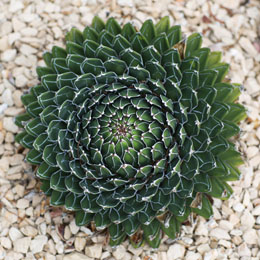Agaves are tough desert plants that can be successfully grown as houseplants. Here are some tips for growing agaves.

Agaves that are often mistaken as cacti, are succulent plants, that belong to the family
Agavaceae. There are around 200 to 300 species of agaves that are natives to Mexico, some parts of the United States, and South America. Most of the agave species are grown as ornamental plants, and are highly popular, as they require very little maintenance.
Most of the agave plants have thick, fleshy leaves that form rosettes. In general, these plants are low-growing shrubs with a short stem. In most species, the leaves have marginal spines and a sharp terminal spine. Most of them flower once a year, and the flowers develop on a tall stem that grows from the middle of the rosette. There are a few agave species that can flower several times a year. However, most of these plants die after flowering; giving life to an offspring, that develop from the base of the stem. The color, shape, and size of the plant, vary with species. Their leaf color ranges from silvery gray to bluish-green. Some species have leaves with yellow or white stripes. Besides being expensive, blue agave plants grow very slowly, and are huge. So, they are rarely grown as houseplants. However, agaves are perfect for gardens, rock gardens, and greenhouses.
Planting an Agave
The most vital requirement of an agave plant is dry soil with good drainage. If the soil is rocky, it will be the best for planting an agave. Otherwise, a rich, loamy soil will also do; provided, it is well-drained. Containers for planting agaves must have at least one drainage hole. It will be better to add some crushed gravel to the pot, before putting the potting mixture. The potting mixture can be made by mixing equal parts of soil and pumice. While full sun is good for mature plants, it has been observed that young plants prefer filtered sun.
How to Care for an Agave Plant
Even though agaves require very less water; young plants need regular watering. You have to water these plants till they establish themselves. In dry climatic conditions, water them once or twice a month. In other conditions, water them only if the soil gets too dry for the plant to survive. However, avoid cold water for these plants.
During winter, the plant gets dormant; and it will be better to keep it in bright light, at a temperature level of 60°F. Fertilizing is usually not recommended for agave plants, as it may promote flowering, which leads to the death of the plant. However, small amounts of fertilizer can be used for young plants.
In case of agaves, the most commonly found pest is the agave snout weevil, that bores through the leaves, and causes the death of the plant. In such cases, you can either use an insecticide meant for beetles and grubs, or destroy the plant. Some types of fungi and mites may also attack agave plants, for which antifungal treatments and miticides can be used.
If you don't have an agave plant, contact your local nursery and get one. It will be better to collect necessary information, regarding the requirements of the specific plant you choose.






 Agaves that are often mistaken as cacti, are succulent plants, that belong to the family Agavaceae. There are around 200 to 300 species of agaves that are natives to Mexico, some parts of the United States, and South America. Most of the agave species are grown as ornamental plants, and are highly popular, as they require very little maintenance.
Agaves that are often mistaken as cacti, are succulent plants, that belong to the family Agavaceae. There are around 200 to 300 species of agaves that are natives to Mexico, some parts of the United States, and South America. Most of the agave species are grown as ornamental plants, and are highly popular, as they require very little maintenance.